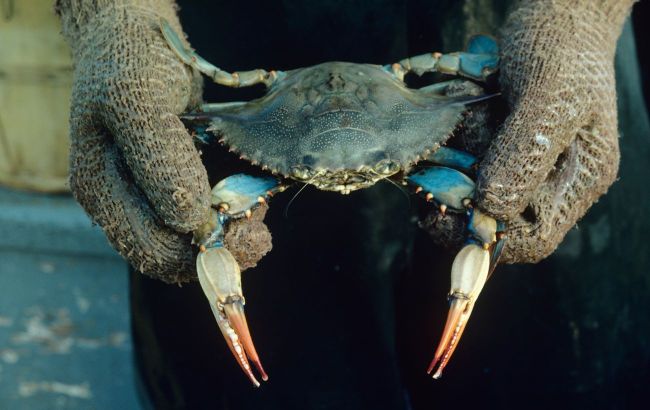Blue crab spotted in Black Sea - Threat or natural newcomer?
 A new resident spotted in the Black Sea waters, the blue crab (photo: Getty Images)
A new resident spotted in the Black Sea waters, the blue crab (photo: Getty Images)
Scientists have recorded the appearance of an invasive species near the Ukrainian coast of the Black Sea, the Chesapeake blue crab, according to the press service of the State Agency for Land Reclamation, Fisheries, and Food Programs.
Where did the blue crab in the Black Sea come from?
According to Serhiy Khutornyi, head of the Black Sea department of the Institute of Fisheries, Marine Ecology, and Oceanography (IRGEMO), the blue crab is a native species of the western part of the Atlantic Ocean.
Its appearance in the Black Sea has indeed been recorded, and not for the first time.
As of today, more than 30 specimens of the blue crab have been officially confirmed along various Black Sea coasts. Of these, about 15 are in Ukrainian waters.
A recent study conducted jointly by three research institutions using modern DNA analysis methods showed that the blue crabs found in Ukraine have a genetic connection with populations in Italy and the USA.
"This makes it possible to trace their spread routes," the State Fisheries Agency noted.
Does the blue crab pose a threat to local fauna?
It is reported that the appearance of the invasive species, the Chesapeake blue crab (Callinectes sapidus), near the Ukrainian Black Sea coast is under the close observation of IRGEMO scientists.
It is emphasized that currently, it does not pose a threat to local fauna.
"Sporadic sightings of this species have been registered for several years now, indicating its gradual but not massive appearance," experts explained.
For example, last year, scientists recorded a female blue crab carrying nearly 1.5 million eggs.
"However, their survival in the conditions of the Black Sea, which has relatively low salinity, is limited due to a complex multistage development," added the agency.
How the blue crab adapts and who its competitors are
According to specialists, the process of adaptation of the new species, the blue crab, to local conditions is complex and lengthy.
"Therefore, information about its possible mass spread and commercial use is currently premature," they said.
Moreover, significant natural competition for the newcomer comes from native crab species:
- grass crab
- rock crab
- marble crab, and others
It is noted that based on recent observations, their populations are stable and widespread in the northwestern part of the Black Sea.
"At the same time, the scientific community remembers successful examples of adaptation, mass development, and later use of other invasive species (rapana, pilengas, etc.), so the situation remains under constant monitoring," experts acknowledged.
Finally, the State Fisheries Agency emphasized that Ukrainian scientists continue to devote considerable attention to studying biological processes in the Black Sea.
"Moreover, after the war ends, the marine aquaculture (mariculture) sector should develop, as it is one of the promising areas for restoring and strengthening the country's economy," the agency concluded.
It's worth noting that invasive species (introduced beyond their natural habitat) can be serious competitors to local ones and impact their populations. That’s exactly what happened with rapana and mussels in the Black Sea.

